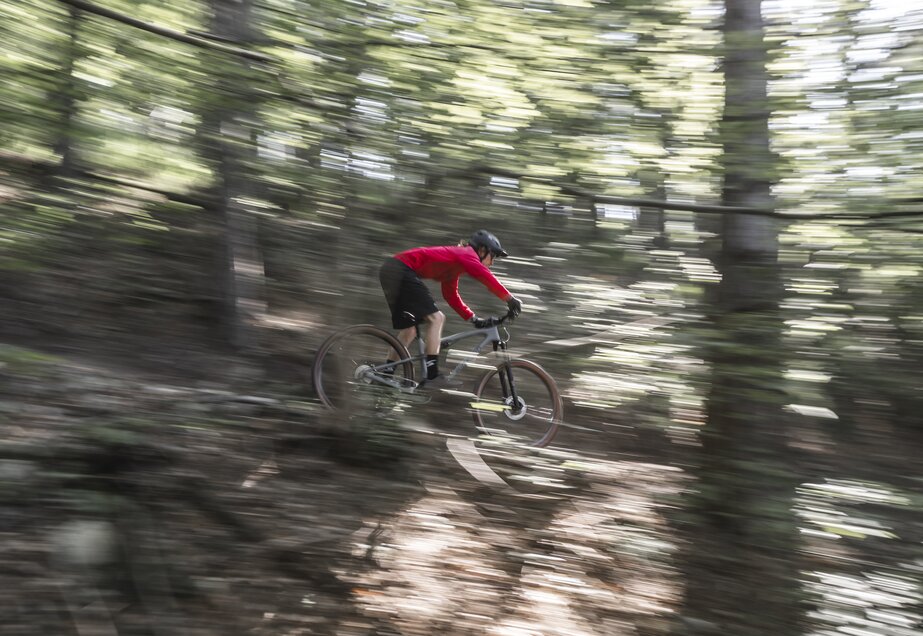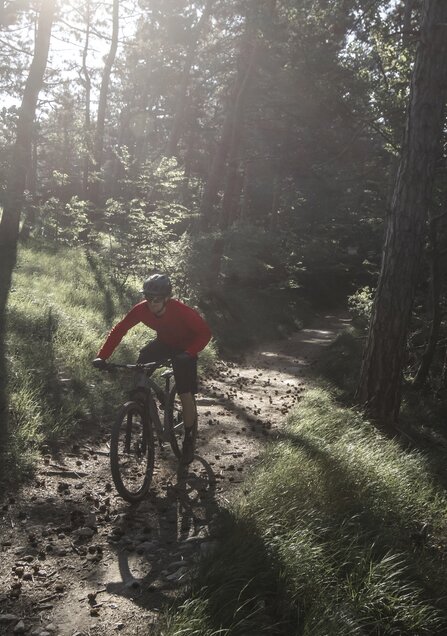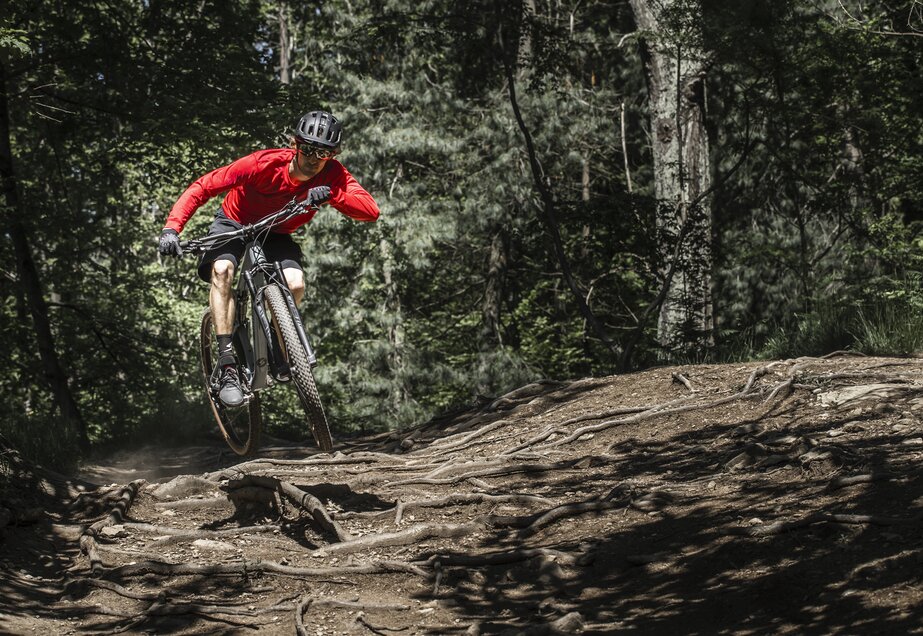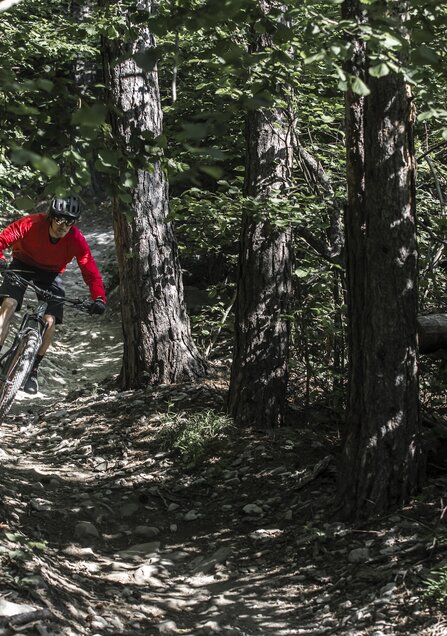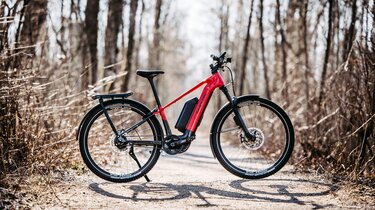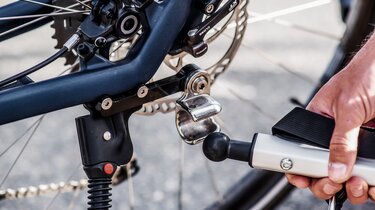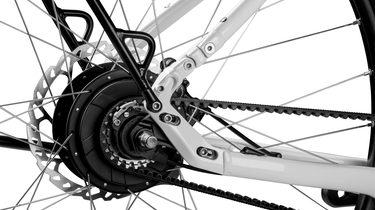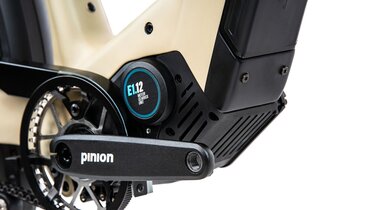

Down country bikes
More suspension travel, a slacker head tube angle, ... Find out about the differences between down country and cross country bikes!
Down country – just a buzzword or a bike category of its own?
Take a cross country bike, take a fork with a little more suspension travel, a slacker head tube angle, and a comparatively aggressive geometry. Et voilà: What you get is a down country bike.
Find out when the term first appeared in the bike scene, how these bikes differ from standard cross-country bikes, and more in the SIMPLON Magazine!
The birth of the down country bike
Even though down country bikes are booming right now, the term “down country” is by no means new. Back in 2013, an editor at Pinkbike first used the term. He described a bike that was new on the market at the time, which resembled a cross country bike but had a much longer suspension travel and a relatively slack head tube angle.
Changed riding behaviour – what it’s like to ride a down country bike
Riding a down country bike requires more attention from the rider – especially compared to an enduro bike. The reason for this is the shorter suspension travel and the more acute angle of the frame. The lower the travel, the better the bike needs to be adjusted to the rider, so the right suspension setup is key in this case.
Another important factor is the bike’s weight, which is often a point of criticism, especially among those wanting to go bike touring. Wrongly so, because many down country bikes – for instance, the Cirex or Cirex SL by SIMPLON – have a carbon frame and lightweight wheels.
Down country vs. cross country – the differences
First things first: Let’s find out what the word down country actually means. The artificial word combines the terms downhill and cross country. You could say that a down country bike is the more adventurous and downhill-heavy version of a classic cross country bike. In terms of the bike itself, one distinct difference is the longer suspension travel. Most manufacturers use their cross country full-suspension bike as a starting point. The first step towards a down country version is a fork with more travel. For the front, 120 millimetres is the usual length. This keeps the front low enough. Additionally, the head tube and seat angles are slacker. The former makes for a smoother riding experience. The latter, however, should not be too slack, as this can result in a sitting position that is too tail-heavy.
But there are also other components that ensure that the rider can have even more fun on downhill trails while still enjoying a safe and agile steering behaviour.
Seatpost
When it comes to the seatposts, the two bike types differ regarding their travel once again. With a minimum of 125 millimetres, down-country riders enjoy more freedom of movement in steep terrain. On cross country bikes, the seatpost is comparatively more rigid, with 60 to 100 millimetres of travel. Sometimes a carbon seatpost without any travel is used.
Tyres
2.35 inches wide on average, with a rough profile, and made of a sticky rubber compound: The tyres of a down country bike are clearly different from those of a cross-country bike. The latter have less profile, they are lighter and optimised for less rolling resistance. They come in widths of 2.25 to 2.35 inches.
Suspension setup
The bikes also differ in the length of their front travel, which is considerably longer on the down country version (120 millimetres), as well as in the stanchion diameter of the fork: It’s usually 34 millimetres on the down-country version, compared to 32 millimetres on the cross country version.
Stem and handlebar
The short stem of a down-country bike (60 millimetres) with rather wide, high handlebars of at least 760 millimetres results in a relaxed riding position. The long stem and moderate handlebar widths with little or no rise create a more stretched-out, propulsion-oriented riding position on the cross-country version.
Brakes
Stable four-piston brakes combined with a 180-millimetre brake disc are used for down-country bikes, while two-piston brakes with 160-millimetre brake discs are used on some cross country bikes.
Down Country & Cross Country
Down country bikes: the target group
120 millimetres of travel in the front and now often also in the rear are the hallmarks of modern down country bikes. The frame is based on that of the cross-country models with 100 millimetres of suspension travel. The difference: Thanks to a different rear triangle and an improved rocker, the frame is optimised for more travel and better performance when riding downhill. In addition, and as already mentioned, the head tube angle is significantly slacker.
But what target group should get a bike from the down country category? Classic trail bikers who enjoy challenging terrain with jumps, for instance. The low weight plays into their hands, especially on longer tours.
Down- country bikes also attract the attention of moderate cross-country riders. They, too, are likely to be impressed by the lower weight – but the additional suspension travel is another decisive factor.
Fans of long-distance bike touring like down country bikes as well, as they score points both in the mountains and in the valley with their relaxed yet propulsive and controlled riding behaviour.
Cirex Down country – SIMPLON's answer to the new bike category
Anyone who values a lightweight bike with fast propulsion should opt for the SIMPLON Cirex or the Cirex SL – SIMPLON's secret weapon that meets the increasing demands of the racing world. The latest edition of the Cirex boasts a lower weight and a frame with balanced geometry for demanding descents and steep climbs. The SL-Version weighs about 200 grams less than the standard Cirex frame and pushes the limits of what’s possible.
The down country option adds the finishing touches to the full-suspension race bike. The suspension travel was increased to 120 millimetres in the front and 116 millimetres in the rear. This makes the bike a top performer both on downhills and on challenging climbs. It’s the perfect choice for all those who want to shine on a fast after-work ride as well as in marathon races or in a Transalp.
You should go for the down country version if ...
- ... you are a rider who likes to ride on rough, rooty terrain.
- ... you are a Transalp rider who appreciates a lightweight bike but still needs a Vario seatpost, more profiled tyres, and extra suspension travel.
- ... you are a novice rider and need more safety downhill.
- ... a true trail bike is too heavy for you.
The "regular" Cirex is the right choice for you if ...
- ... you want to compete in marathon races, and weight matters more to you than anything else.
- ... you would like to generate as much propulsion as possible.
- ... agile handling of the bike is crucial for you.
Do you need help choosing the right bike? Get all the information you need at a SIMPLON dealer near you!

